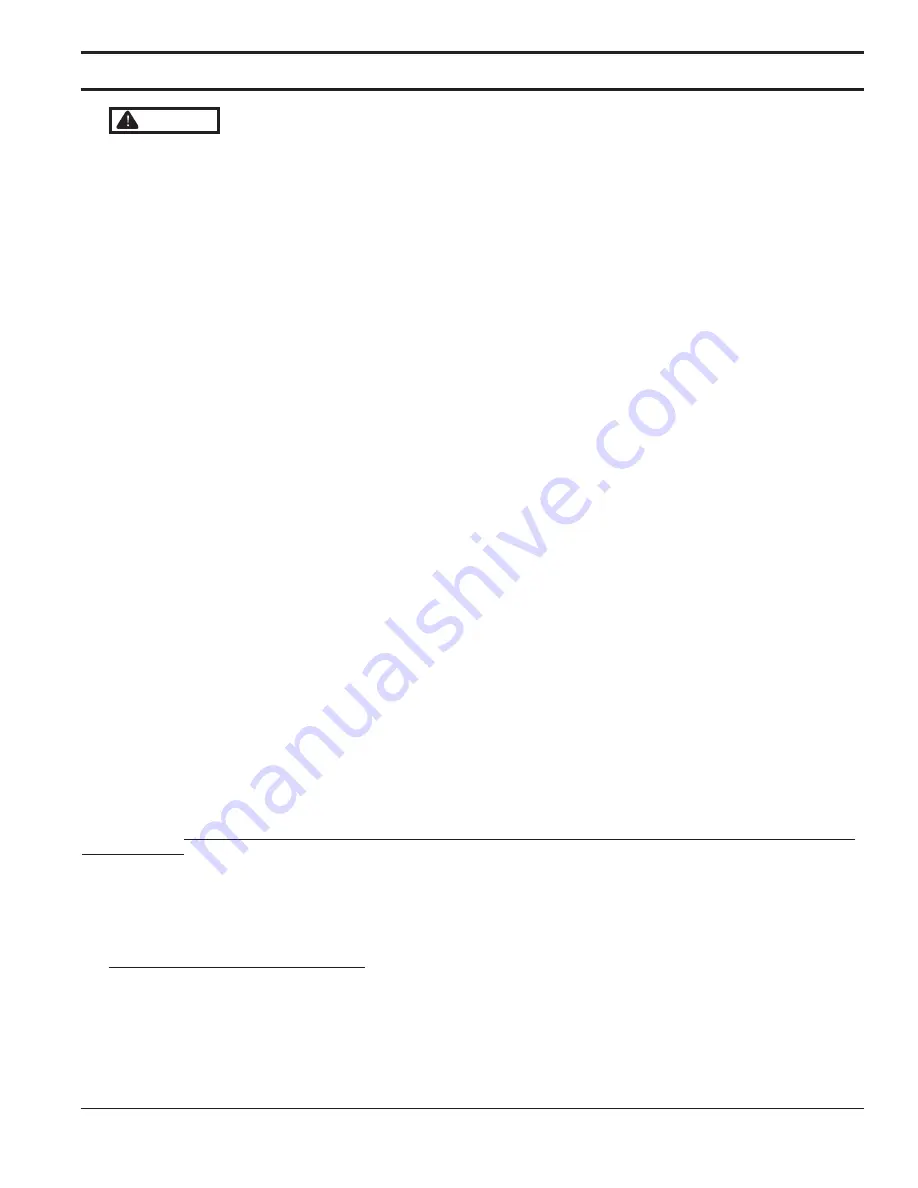
15
107774-02- 4/18
VII. Venting
A. Vent System Design
There are three basic ways to vent this boiler:
•
Horizontal (“Side Wall”) Twin Pipe Venting (Figure 7.0a)
- Vent system exits the building through an outside
wall. Combustion air and flue gas are routed between the boiler and the terminal(s) using separate pipes for
at least part of the way. A summary of Horizontal Twin Pipe venting options is shown in Table 7.5
.
•
Vertical Twin Pipe Venting (Figure 7.0b)
- Vent system exits the building through a roof. Combustion air
and flue gas are routed between the boiler and the terminal(s) using separate pipes for at least part of the
way. A summary of Vertical Twin Pipe venting options is shown in Table 7.13
•
Split Venting (Figure 7.0c)
- Exhaust system exits the building through a roof, and combustion air is drawn
from a terminal mounted on the side wall. A summary of split venting options is shown in Table 7.21
All of these systems are considered “direct vent” because the air for combustion is drawn directly from the outdoors
into the boiler. One of the vent option columns in Tables 7.5, 7.13, 7.21 must match the planned vent and air intake
system exactly.
Design details applying to all vent systems are shown in this section. Observe all design requirements in this
section, as well as those unique to the type of system being installed:
• B - Design Requirements Unique to Horizontal Twin Pipe Vent Systems
• C - Design Requirements Unique to Vertical Twin Pipe Vent Systems
• D - Design Requirements Unique to Split Vent Systems
1. Approved Vent Systems and Materials – The following materials and vent systems may be used to vent this
boiler:
• CPVC – Use only CPVC listed to ASTM F441. In Canada, this pipe must also be listed to ULC S636.
• PVC – PVC may be used only as permitted in this manual. All PVC must be listed to ASTM D2665. At least
30” of CPVC pipe, and at least one CPVC elbow, must be installed between the boiler’s vent connection and
the PVC pipe. Use of foam core PVC is not permitted for venting. PVC vent pipe may not be used to vent this
boiler in Canada.
WARNING Asphyxiation Hazard. Failure to vent this boiler in accordance with these instructions
could cause products of combustion to enter the building resulting in severe property damage, personal
injury or death.
Do not interchange vent systems or materials unless otherwise specified.
The use of thermal insulation covering vent pipe and fittings is prohibited.
Do not use a barometric damper, draft hood or vent damper with this boiler.
When using the CPVC/PVC vent option, the use of CPVC is required when venting in vertical or horizontal
chase ways.
Any CPVC vent materials supplied with this boiler do not comply with B149.1.S1-07 and are not approved
for use in Canadian jurisdictions that require vent systems be listed to ULC S636-2008. In these
jurisdictions, vent this boiler using a listed ULC S636 Class IIB venting system.
Do not locate vent termination where exposed to prevailing winds. Moisture and ice may form on surface
around vent termination. To prevent deterioration, surface must be in good repair (sealed, painted, etc.).
Do not locate air intake vent termination where chlorine, chlorofluorocarbons (CFC’s), petroleum
distillates, detergents, volatile vapors or other chemicals are present. Severe boiler corrosion and failure
will result.
The use of cellular core PVC (ASTM F891), cellular core CPVC or Radel (polyphenolsulfone) is prohibited.
Do not locate vent termination under a deck.
Do not reduce specified diameters of vent and combustion air piping.
When installing vent pipe through chimney, as a chase, no other appliance can be vented into the
chimney.
Do not allow low spots in the vent where condensate may pool.
Summary of Contents for K2WTC-135
Page 81: ...81 107774 02 4 18 X Domestic Hot Water Piping continued Figure 10 1 Domestic Hot Water Piping...
Page 89: ...89 107774 02 4 18 XI Wiring continued...
Page 90: ...90 107774 02 4 18 Figure 11 8 Internal Wiring Connections Diagram XI Wiring continued...
Page 101: ...101 107774 02 4 18 Lighting and Operating Instructions XII Start Up and Checkout continued...
Page 142: ...142 107774 02 4 18 XVI Repair Parts continued...
Page 145: ...145 107774 02 4 18 XVI Repair Parts continued...
Page 148: ...148 107774 02 4 18 XVI Repair Parts continued...
Page 150: ...150 107774 02 4 18 XVI Repair Parts continued...
Page 152: ...152 107774 02 4 18 XVI Repair Parts continued 120 121 122 123 124 125 126 127...
Page 159: ...159 107774 02 4 18 SERVICE RECORD DATE SERVICE PERFORMED...
















































